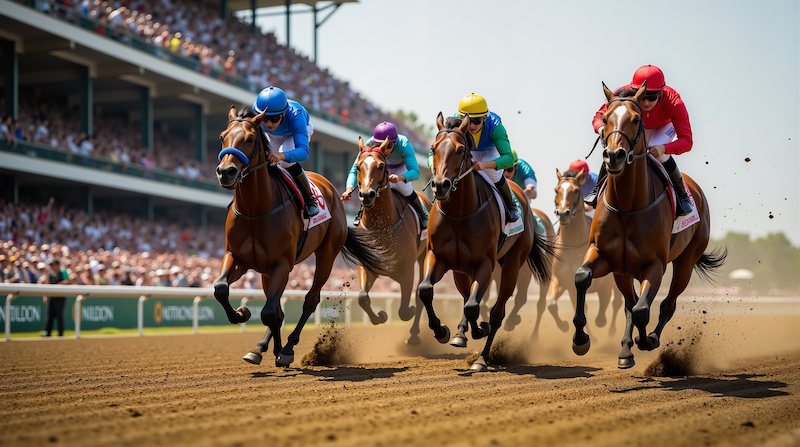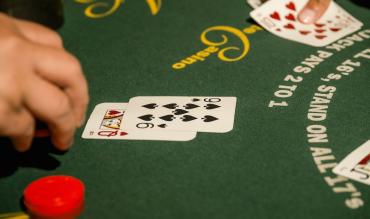Table of Contents
- Who is Alan Woods?
- Alan Woods' Early Life & Card-Counting in Hobart
- Why Hong Kong Racing Was Ideal for Alan Woods
- Alan Woods’ Partnership with Bill Benter
- Alan Woods Betting Strategy
- A Glimpse Inside the Room: The 2-1 Scene
- Why Alan Woods and Benter Split
- Alan Woods in Manila: Rivals, Wealth, and the 1990s
- Alan Woods' Personal Life: Marriage, Style & Personality
- Alan Woods’ Homes, Cars & Holiday Lifestyle
- Alan Woods' Nicknames and Public Sightings
- Alan Woods Net Worth: Was He Worth $500 Million?
- Bookmakers, AI, and the Edge in 2025
- Legacy and Lessons from Alan Woods
Who Is Alan Woods?
If you’ve ever asked, “Who is Alan Woods?,” he was the untamed genius of modern gambling – an Australian mathematician who used algorithms to conquer blackjack and Hong Kong horse racing.
Known during his life as Mr. Huge, he amassed a fortune estimated at AUD 670 million (approximately US$500 million) by the time he died in 2008. That status places Alan Woods net worth among the highest ever seen in professional gambling.
Alan Woods' Early Life & Card-Counting in Hobart
Born in 1945 in Murwillumbah, New South Wales, Woods studied mathematics at the University of New England but dropped out before graduating. His blackjack gambling journey began in Hobart, Tasmania, where he applied Edward Thorp’s card-counting system to win AUD 16,000 in four months. He later moved to Las Vegas and won over US$100,000 before being banned by the casinos for his skill.
He used a basic hi-lo counting system to keep track of cards remaining in the deck. By adjusting his bets when the odds swung in his favor, he built discipline – and proof that math could beat chance.
Why Hong Kong Racing Was Ideal for Alan Woods
Woods turned to horse racing next. Hong Kong suited his analytical mind because:
- It featured small racing pools with limited horses.
- There were only two racecourses to model (Sha Tin and Happy Valley).
- All betting was tote-based, not fixed odds.
- The data was clean, and the environment tightly regulated.
This made Hong Kong's racing scene ideal for modelling. Unlike in Europe, where tracks and odds vary wildly, Woods found structure and predictability.
Alan Woods' Partnership with Bill Benter
Alan Woods Betting Strategy
In 1984, Woods met Bill Benter at the Hong Kong Jockey Club – reportedly at the racetrack itself. Both were former card counters moving toward more analytical betting. Together, they co-pioneered the first major horse-racing algorithm, combining Woods’ aggressive model building with Benter’s disciplined code structure.
Their system used over 130 variables per horse – including draw bias, pace, weather, jockey, and track speed – to calculate a horse’s true chance of winning.
They applied the Kelly Criterion to size their bets. For example:
- Public odds: 2-1 (33%)
- Their model: 1.5-1 (40%)
- Edge = under bet horse → bigger bet
In plain language: they didn’t need to predict winners – they needed to find where the odds were wrong. The idea was simple but profound: reading data beats reading people. This phrase is often credited to Woods himself or those close to his circle. As one analyst summarized the Alan Woods betting strategy:
“You didn’t need to pick the winner. You just needed to pick the mispriced opportunity – and press your edge accordingly.”
A Glimpse Inside the Room: The 2-1 Scene
It’s 1993. You’re standing in a smoky rooftop bar in Manila. Alan Woods is nursing his third whisky, eyes fixed on a monitor showing Sha Tin Race 7.
The horse he modelled at 2-1 wins – exactly as expected. No cheers. No fist-pumps. Just a quiet nod. He’d already done the work.

Why Alan Woods and Benter Split
By 1987, the partnership ended. Woods preferred freedom. Benter followed structure.
Some suggest Woods wanted to tweak the model without Benter's input. Others say Benter was more risk averse. Either way, Woods went solo with Libertarian Investment Ltd., a private operation registered in Hong Kong.
Though not widely publicized, Libertarian Investment Ltd. functioned as the legal entity behind his betting syndicate. At its peak, the company is believed to have employed a small team of analysts and data coders – perhaps a dozen or so – mostly focused on model maintenance, data cleansing, and real-time race analysis.
It wasn’t a sprawling office; rather, it was lean, efficient, and highly secretive. The name reflected Woods’ personal philosophy: freedom from external control, both in politics and probability.
Personally, I think Woods brought fire and innovation. Benter brought discipline and longevity. Benter ended up wealthier, but Woods might’ve surpassed him – had he lived longer.
Some believe Woods may have provided the initial spark or “fire” that allowed Benter to develop the long-term system. Whether it was Woods’ creative vision or boldness, many insiders suggest Benter needed that energy to push the early frontier of algorithmic betting.
Alan Woods in Manila: Rivals, Wealth, and the 1990s
Woods moved to Manila, where he worked alongside and against Zeljko Ranogajec, another data-driven gambler. Though sometimes collaborators, they were often quiet rivals.
By the mid-1990s, Woods’s systems were so powerful that he was believed to account for up to 2% of all Hong Kong Jockey Club betting turnover, according to estimates circulated among industry insiders. That meant he was moving hundreds of millions of Hong Kong dollars from abroad.
His betting models identified value across the win, place, and especially exotic bets like trifectas. A centralized pool system helped. He wasn’t betting against a bookie, but the public’s collective errors. He looked for inefficiencies in the pool, particularly exotic bet combinations like quinellas and trifectas that the public often ignored or mispriced.
Alan Woods' Personal Life: Marriage, Style & Personality
Woods married Meredith in 1972. They had two children together before separating in 1979. It's not clear if gambling influenced the split, but the timelines match his deeper entry into professional punting.
He liked low-key bars, rooftop lounges, and the chaotic pulse of Manila casinos. While some might call these haunts “seedy,” all dim lights and faded glamour, Woods didn’t mind. He embraced their authenticity. In fact, the grittiness probably appealed to his contrarian streak.
In older photos, he’s seen wearing Ralph Lauren, Timberlands, and leather jackets. His vibe was relaxed wealth, not showy but confident.
If this article interests you, keep reading. Alternatively, explore other topics like blackjack strategy, blackjack side bets, and roulette strategy.
Alan Woods’ Homes, Cars & Holiday Lifestyle
Alan Woods lived modestly affluent, with homes and occasional travel, but no flashy yacht or supercar headlines.
- Manila penthouse: He resided in a dual-level penthouse (levels 32–33) at the Rockwell development in Makati, Manila, an upscale riverside complex known for luxury living.
- Property footprint: Woods passed away in Hong Kong (Hong Kong Sanatorium & Hospital, overlooking Happy Valley racecourse) and reportedly maintained ties to his Australian roots, but his primary real estate seemed centered in the Philippines.
- Cars: No public records identify specific vehicles. Given his reputation for casual luxury, it’s likely he used high-end sedans or SUVs, but he wasn’t photographed with sports cars or ostentatious vehicles.
- Holiday destinations: There's no firm evidence of holidays abroad. However, he favoured Manila’s rooftop pool lounges and occasional travel back to Australia to see family, probably preferring low-key, private breaks over tourist hotspots.
Alan Woods' Nicknames and Public Sightings
The nickname Mr. Huge emerged while he was still alive, a reference to both his betting size and outsized persona in the Hong Kong and Manila betting worlds. No other nicknames stuck, though some referred to him simply as "the algorithm guy."
He wasn’t a recluse. He just wasn’t flashy. Old newspaper snippets from the 1980s and 90s place him in high-stakes rooms, but rarely in the social spotlight.
Alan Woods Net Worth: Was He Worth $500 Million?
Alan Woods’ net worth at death in 2008 was widely reported as around US$500 million. Australian sources and the South China Morning Post support this estimate. Given the scale of his turnover and lack of extravagant spending, the figure holds weight.
There’s no public will or formal financial breakdown. However, friends and betting associates believe his wealth was shared among family and a few long-time insiders close to his operation.

Bookmakers, AI, & the Edge in 2025
Woods never aimed for perfection, just an edge. As one might summarize his mindset: “You don’t have to be perfect. Just be more right than the market – and size your bets accordingly.”
Woods once said AI was underused in gambling. Today, it’s the opposite. Bookmakers now deploy machine learning to shape live odds. But the door isn’t shut.
- Models can still find edges in less obvious races.
- Bookies can’t adjust for every niche or local trend.
- Human-coded nuances like seasonality or stable form still offer value.
If you build in what others don’t see, the edge isn’t dead. It’s hidden. As Woods proved: the game can be beaten – not by guts, but by numbers.
There are always known unknowns, and unknown unknowns, when betting on variable outcomes. But if your model works over time, nothing else matters.
Even in 2025 and beyond, some believe it is still possible to discover, or rediscover, a code that gives you a consistent edge. It’s not about certainty, but about applying the right structure: scoring, weighting, and identifying variables others overlook.
The answers may already exist in the data. You just need to apply the right formula to get as close as possible to the truth of an outcome. It's never a certainty, but it can be enough.
Legacy and Lessons from Alan Woods
The obituary in the Sydney Morning Herald called him “a super-punter who quietly masterminded a revolution.” No marketing. No books. Just math.
There aren’t many direct quotes from Woods, but his life echoed a core belief: find the truth in numbers and stay the course.
Woods succeeded not because he chased winners, but because he chased inefficiencies. He didn’t just change gambling, he elevated it from luck and instinct to rigor and repeatability. He built the model that told the truth others missed.
That was Alan Woods’ way.


